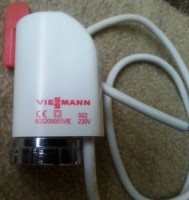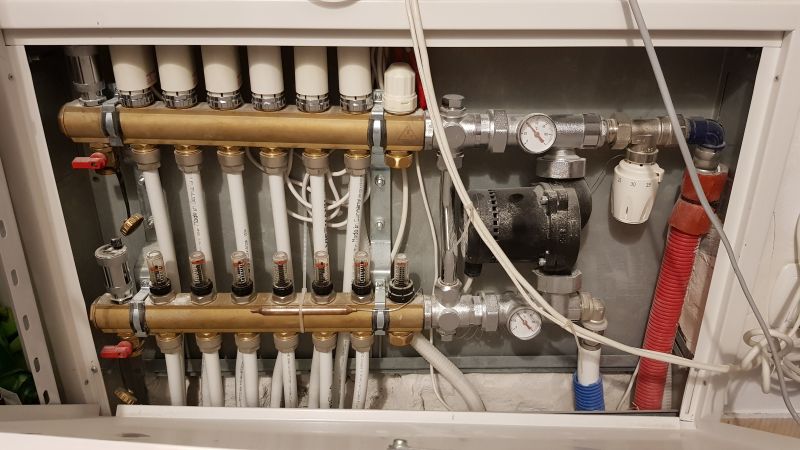Hello ,
in my underfloor heating - made by developer on Viessmann equipment - one heating loop does not work. The fact is that I haven`t looked into it and I`ve been living here for a few months and have never had such heating - that`s why the suspiciously cold area around the floor seemed to me like TTTM, or it`s just the way it is.
Yesterday I came back from vacation and a cold house and I can see exactly which loop is not working.
Regulation is via surface-mounted controllers and actuators on the power strip (distributor).
Maybe one of the actuators didn`t work well from the beginning?
I would like to open it manually but I don`t know and I have no one to ask?
EDIT: catalog number 7441022. I can`t find the user manual anywhere.
in my underfloor heating - made by developer on Viessmann equipment - one heating loop does not work. The fact is that I haven`t looked into it and I`ve been living here for a few months and have never had such heating - that`s why the suspiciously cold area around the floor seemed to me like TTTM, or it`s just the way it is.
Yesterday I came back from vacation and a cold house and I can see exactly which loop is not working.
Regulation is via surface-mounted controllers and actuators on the power strip (distributor).
Maybe one of the actuators didn`t work well from the beginning?
I would like to open it manually but I don`t know and I have no one to ask?
EDIT: catalog number 7441022. I can`t find the user manual anywhere.




